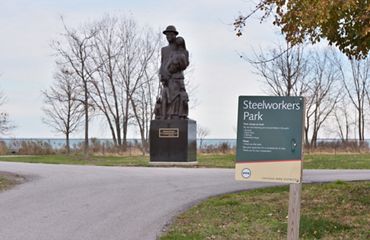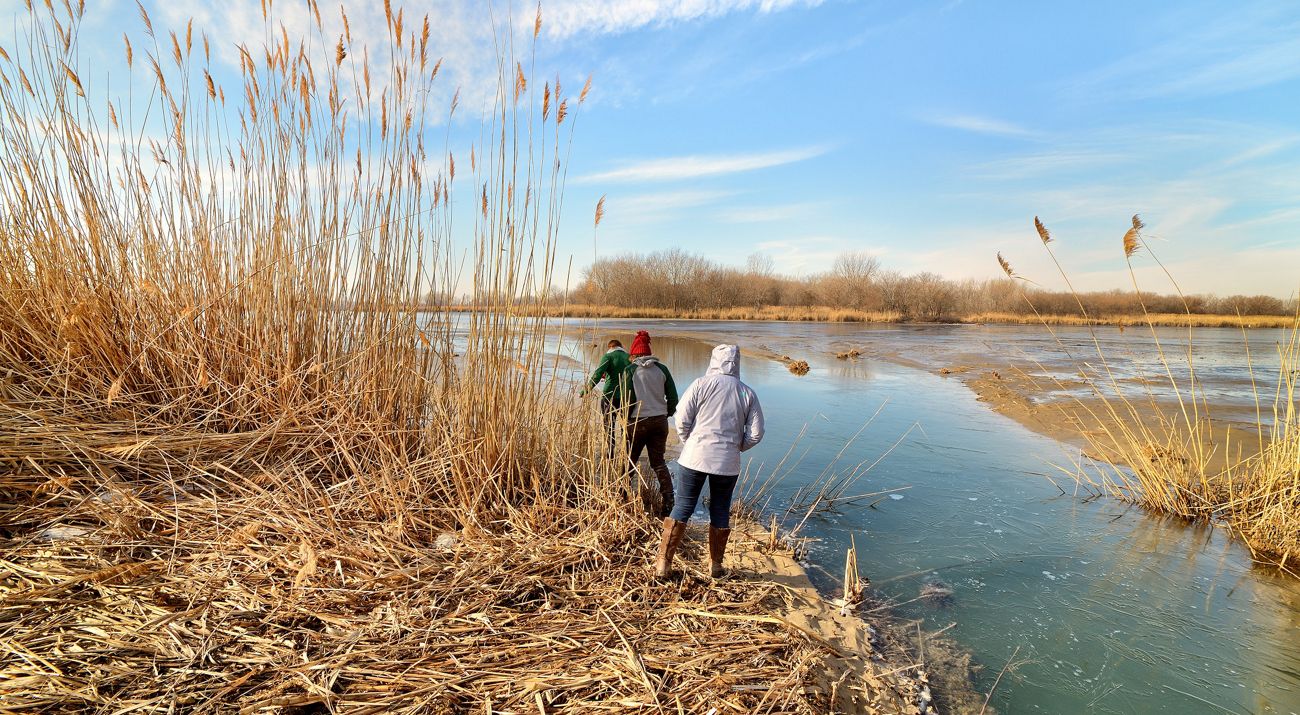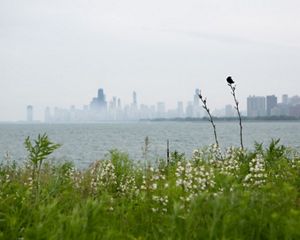In 2020, residents, community groups and environmental organizations began fighting to keep known polluter General Iron from relocating from Chicago’s Lincoln Park neighborhood to the Southeast Side. In May of 2021, former Chicago Mayor Lori Lightfoot delayed the permit process for the company after the U.S. government expressed concerns over the move's possible impact on the environment. But this issue is just one in a long history of environmental injustices the community faces. Just two months prior to the delaying of the permit, former Illinois state director Michelle Carr spoke with Gina Ramirez and Olga Bautista, two of the city’s environmental justice leaders and Southeast Side residents, about the legacy of industrial pollution that has impacted human health, as well as what policymakers, elected officials and fellow citizens can do to make a difference in the future.
Michelle: The relocation of General Iron (which is now owned by Reserve Management Group) is only the latest in a series of environmental injustices threatening Chicago’s Southeast Side. Could we talk about the legacy of industrial pollution, and what this means for local communities, lands and waters?
Gina: The Southeast Side is an environmental justice community. Everywhere you turn you smell a foul odor, or see piles of debris you can’t name. There are air monitors all over the place, and our asthma rates are high. This is the norm if you live in this neighborhood: you can see it, you can taste it, you can smell it.
Olga: To understand why this is, you have to know the history. The Southeast Side was a hub for the steel industry for over 100 years. During that time, it was common to see clouds of pollution in the air. Some of the old timers would hang their clothes up to dry and they would be covered with soot that was landing all over the neighborhood. During that time, there was this idea that “yes, these steel mills are here, yes people have to contend with it,” but the industry provided jobs that allowed residents to pay their mortgages and send their kids to college. That meant the environmental issues weren’t front and center.
Today, those steel mills are gone, but we still have the same zoning rules that allow the dirtiest industries to step in and take their place. What we have seen in the last 40 years is a transition from steel mill hub to bulk storage hub. For example, there were huge piles of pet coke stored in our neighborhood, as well as coal along the Calumet River. Our local air monitors picked up manganese—an ingredient used to make steel—and when it’s in a powdered form and you breathe it in, it enters your sinuses and goes directly to the brain, causing severe Parkinson’s-style symptoms, lowered IQ, and other issues.
Honestly, we could spend all day talking about the companies along the Calumet River and the violations they have committed. Some people call it a “toxic soup,” and it really shows the disparity across the city. Certain parts of Chicago, including the Southeast Side, have tremendous amounts of pollution, while others have relatively none. We are a community that’s already underserved in terms of medical care and health services, so when you have polluters, sick people, and a lack of health care all paired together, it’s a recipe for disaster.
Quote: Gina Ramirez
The Southeast Side is an environmental justice community ... This is the norm if you live in this neighborhood: you can see it, you can taste it, you can smell it.
Michelle: What led us here? And what’s the answer when people ask the question: Where should these industries be located?
Gina: Whenever I get asked that question, my response is that the burden shouldn’t be put on us to find an alternate location for where facilities should go. We’re already having to work so hard just to try and keep these businesses from entering our community. There needs to be plans and policies put in place that answer these questions, and that find ways for these facilities to operate safely.
Olga: One thing that’s really important to understand is cumulative impact. With the General Iron plant, for example—it’s not just the recycling part of the business that’s a problem. This facility will be very dependent on trucks. Between the potential relocation of General Iron, and another new logistics facility that’s entered the neighborhood called North Point, we estimate we are going to see thousands of additional trucks coming through on a daily basis. But the permitting process doesn’t take into account the number of facilities that already exist in the area, and it doesn’t require the companies to disclose the truck emissions from all of these vehicles driving through or idling at the plants. When these are paired together, that’s a lot of pollution added to the air we breathe. On top of that, the influx of new traffic poses physical threats to residents who are driving, biking and walking in the community. We have already had one tragic incident where a little boy was struck and killed by a truck driver.
Ultimately, we need a plan that is not just sustainable, but one that is restorative. The way we govern these industries should be focused on repairing the harm that has been caused, not just operating safely. It sounds extreme, but if we want to prioritize public health, we have to put the onus on policymakers to catch these bad actors, and to determine where they should operate to keep people safe.
Quote: Olga Bautista

Ultimately, we need a plan that is not just sustainable, but one that is restorative.
Michelle: What could better protect people and nature going forward?
Gina: I’m a third-generation resident, and my parents would talk about going to the natural areas. But when I was little, it was a time of deindustrialization, so crime was up, job loss was up, and there was lots of illegal dumping. All of these issues kept us away from the natural areas in our community. Now there’s a revitalization and a renewed interest. My son loves to go to Eggers Grove, and as a parent, I want us and others to be reconnected to this space. In this way, Olga and I are trying to be out in these spaces and lead by example. As Olga says: “Joy is a form of activism, too.”
Olga: During the pandemic, we’ve been meeting with partners at our natural areas, because gathering outside has been a safe option. It’s been a reminder that the amount of biodiversity we have here is incomparable to any other community in Chicago. We have natural gems like Big Marsh, Indian Ridge Marsh, and Steelworkers Park. These are all literally 5 minutes away from our homes. For so long, we have been focused on our environmental justice issues, which of course are important, but bringing people into these places is an important part of the work, too. We have to remember that the redlining has not only kept people out of certain neighborhoods, it has also kept them from enjoying certain natural areas. For many, it’s still a big deal to cross invisible lines to visit places like Big Marsh, because for a long time they were not welcome. But it’s key to have them in these spaces, because it’s healing. It helps them feel pride in the community, especially when we are often talking about how polluted it is. And through these efforts, by getting people to engage in these natural areas, we are trying to change the culture of the entire region one family at a time.
Michelle: This is not a burden that should fall only on our neighbors in Southeast Chicago, but on all of us throughout the city. What actions can each of us take right now—and in the future—to make a difference?
Olga: As we work to change these policies, so much of our focus is on organizing and grassroots efforts. That often leaves us without time and capacity to gather the data we need to move elected officials or agencies, as it is often up to us to prove that these companies are polluting, rather than the burden being on the companies to show that they are not. We are connecting with researchers who are helping us gather the information we need, but as we dig in, we are realizing there is very little baseline data for us to measure against. More data and research is always helpful, and one thing that will be key going forward is understanding how climate change will impact industrial corridors.
I would add that it’s helpful to be brought in as a partner on the front end of research initiatives and other projects. Sometimes we get invited to do things, but the program is already planned out. So let’s drive the car together, let’s apply for that grant together, let’s develop the goals together. And for all of us in Chicago, let’s remember that this is not just a Southeast Side issue. People across the city are experiencing different kinds of environmental justice issues, and they are predominantly happening in Black and Brown neighborhoods.
Gina: Making sure these conversations happen is really important. Even just sharing a tweet to raise awareness goes a long way. It’s also important that community members and grassroots leaders have a seat at the table, and there are a lot of big organizations that can open up those doors. So if you’re someone who has a connection that can make a difference, that can have an impact. Educational services also make a big difference. We want to learn more about the biodiversity in the neighborhood. If you have that to share, it helps. Those opportunities are needed here. We are on our way, and I’m so glad to be having this conversation.
To get involved, you can follow @CHIhungerstrike on Twitter and Southeast Environmental Task Force on Facebook for updates, and also to support both in their continued fight for clean air and water.


